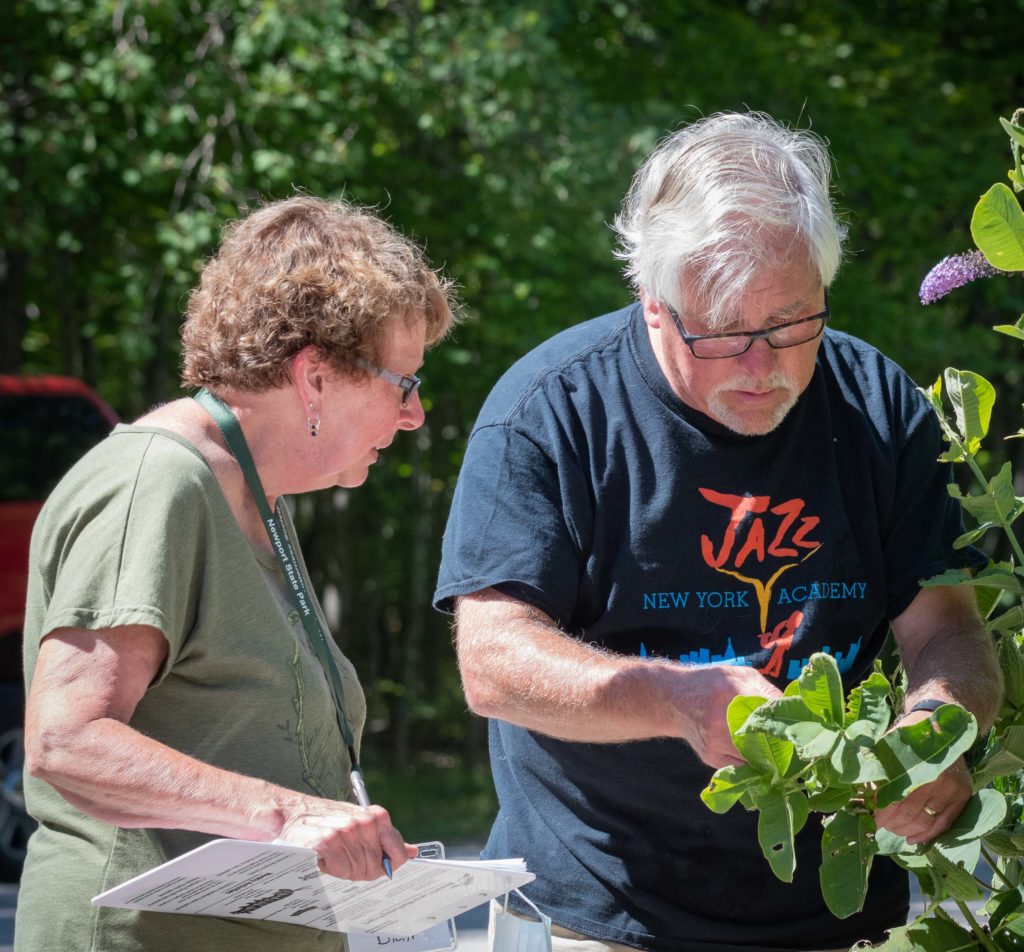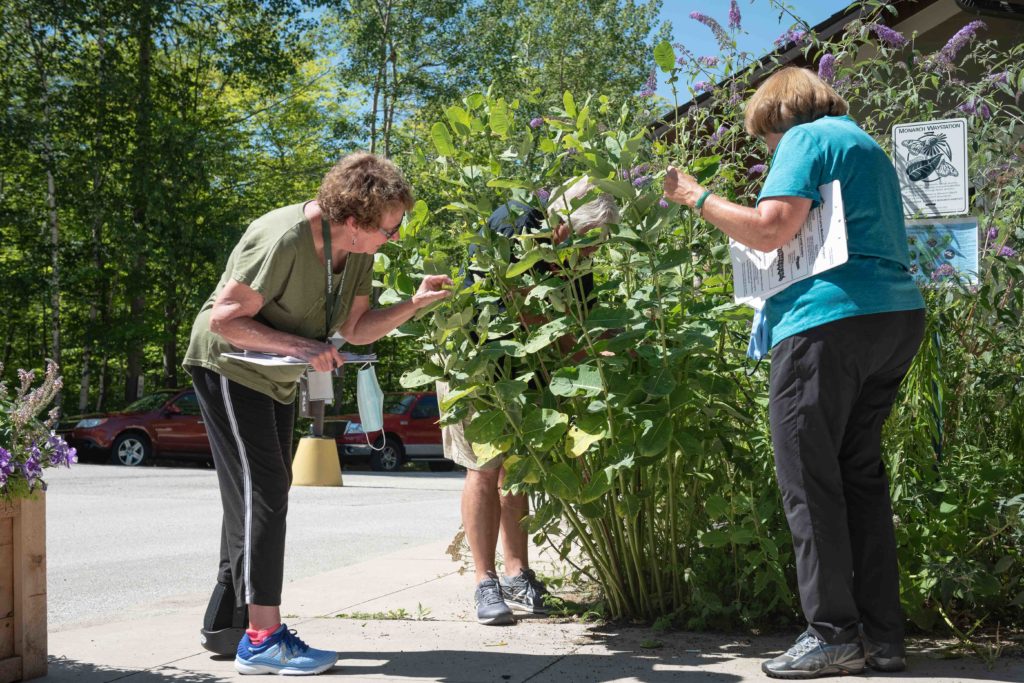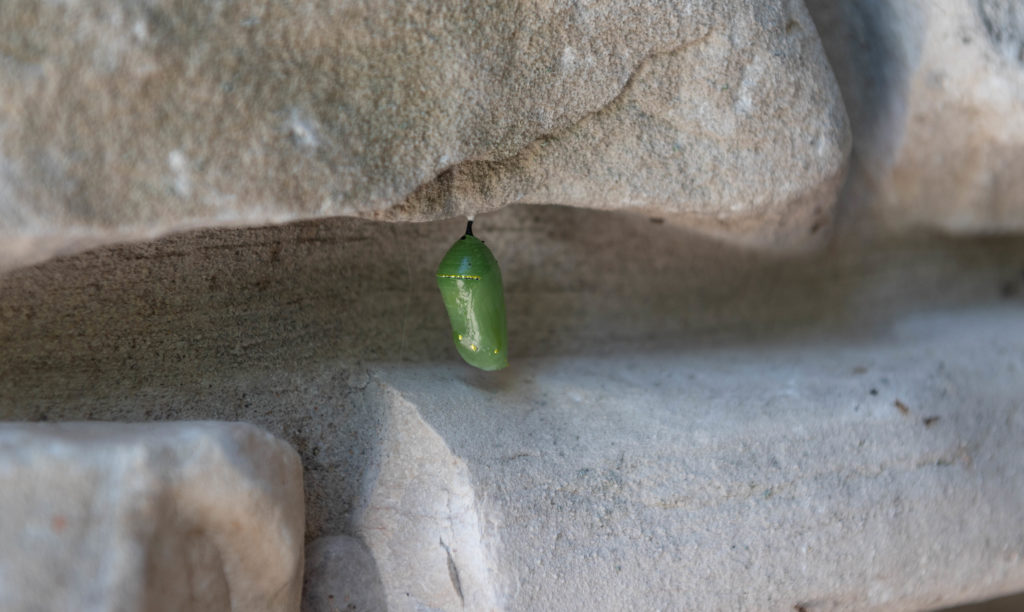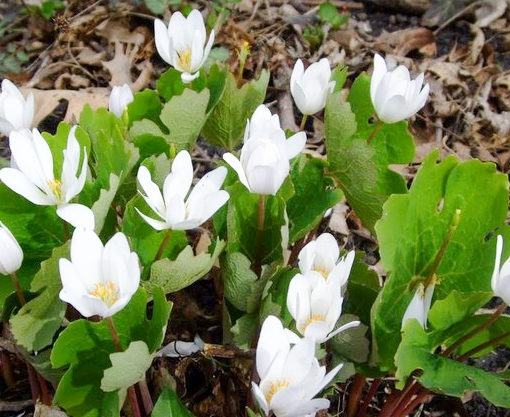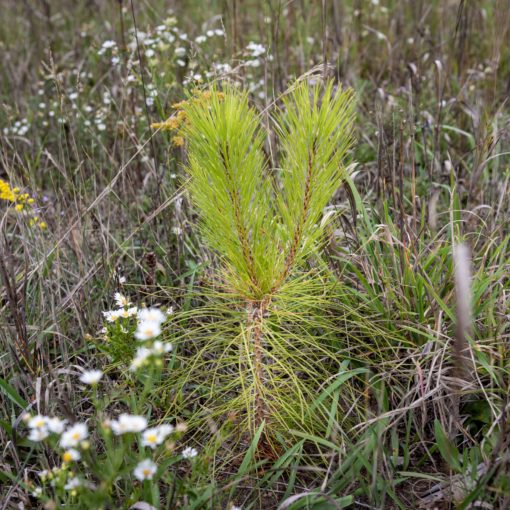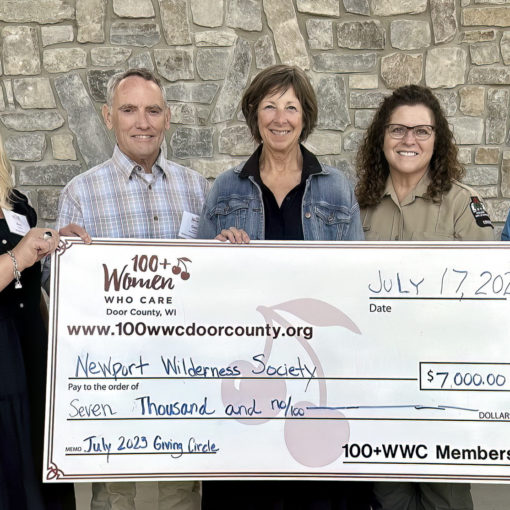When a visitor arrives at Newport State Park during the summer, they may (or may not) notice the pollinator habitat gardens located around the park office. What might look like a patch of unruly shrubs to the untrained eye is actually a Monarch Butterfly ‘way station’. Once a week, from spring through fall, volunteer citizen scientists gather here with clipboards and magnifying glasses. They are collecting data for the Monarch Larva Monitoring Project, a program developed in 1997 by researchers at the University of Minnesota to analyze long-term data on larval monarch populations and milkweed habitat. (It is now a collaboration of multiple agencies, including the University of Wisconsin–Madison Arboretum.)
At the beginning of the spring season, volunteers first count milkweed plants as they emerge. As the season progresses, the survey focuses on the number of eggs and larvae (caterpillars). The instar stage of each larva is recorded, along with details such as evidence of predation or mortality. When the larvae eventually pupate, the number of resulting chrysalis are added to the count. Other important data is also collected: time of day, temperature, rainfall, presence of other insect infiltration, nectar sources that may be in bloom, and the presence of adult Monarchs in the area and whether they are male or female.
Newport has participated in this data collection project since 2018. Annual site results are here.
It is painstaking but rewarding work, as reflected in Newport Naturalist Beth Bartoli’s recent comments:
This year in particular, it seems the monarchs were late in starting the egg laying process here at Newport. Checking back on our previous data collected, it shows that the monarchs did indeed start later this year; 1 week later from 2019 and a full 2 weeks later than 2018. That’s a significant change in just three seasons. All of the information we gather helps MLMP look at the larger international picture to see why these trends may be occurring.
Though this is a labor intensive process, it is rewarding to see the fruits of our labor help on such a large scale. I couldn’t do this without the consistent efforts of volunteers Jim, Pat and Debbie. They have been out there in the trenches with me, training extensively to make sure our data is accurate. It also works out to be an outdoor classroom of sorts, as visitors are curious about what we are doing, asking questions and even getting involved in the process. It has even inspired some to start their own pollinator gardens.
Newport Naturalist Beth Bartoli
Additional photos from the day:


